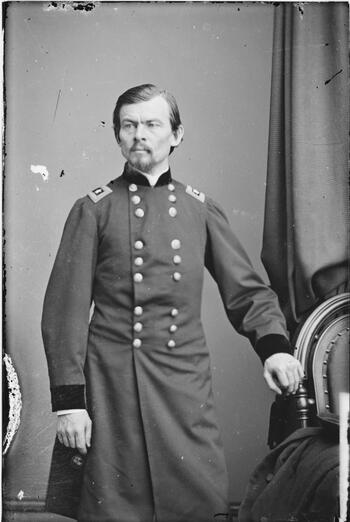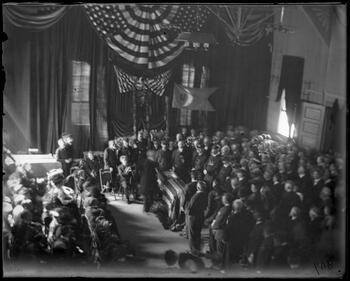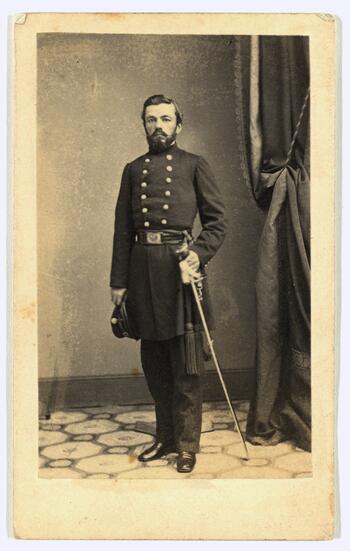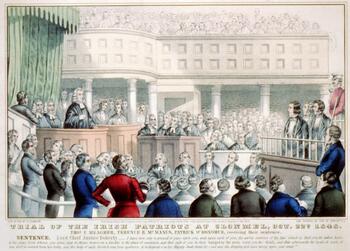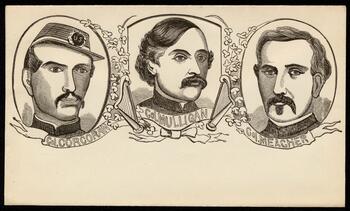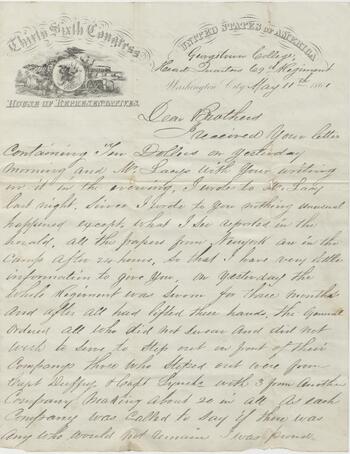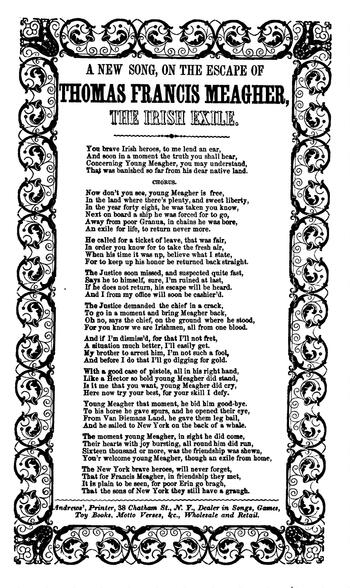Immigration to the United States surged in the 1850s in large part due to the tumultuous 1848 revolutions that took place across Europe. Major political upheavals affected countries including the German states, the Italian states, France, and Ireland, prompting many to leave home for the relative stability of the United States. Many of the new arrivals joined the Union Army to fight in the American Civil War.
Some made their homes in New York, including German immigrants Franz Sigel and Carl Schurz, and Hungarian Charles Zagonyi, all former officers in their respective homelands who were forced to flee to the United States following Prussian and Austrian oppression after the failed revolutions of 1848. Zagonyi served as an officer under John C Fremont in the American Civil War, but disappeared from the historical record after 1863. Franz Sigel also served in the Union Army during the American Civil War having fought in the Second Battle of Bull Run and achieving the rank of major general. He returned to New York City in 1867 and worked in education and journalism until his death in 1902. Schurz served with distinction as a general in the Union Army and following his military service continued to serve in a political capacity, first in Missouri and eventually moving to New York City in 1881. In New York, he spent the remainder of his life involved in journalism and politics, joining the Independents or Mugwumps, supporting Grover Cleveland in the 1884 presidential election.
Irish nationalist Thomas Meagher was convicted of sedition for his involvement in the Irish Rebellion of 1848 as the leader of the Young Irelanders, and was sentenced to be transported to Australia as punishment. He escaped Ireland in 1852 and settled in New York City. He joined the Union Army and rose to the rank of brigadier general, known particularly for recruiting and leading the Irish Brigade.
Franz Sigel, courtesy of Library of Congress, Prints & Photographs Division, Civil War Photographs, [LC-B813- 1512 C].
Franz Sigel was born in the German state of Baden and as one of the few revolutionaries during the 1848 Revolution to have military training, he quickly rose in rank. After his militia’s defeat, he escaped to England and then to the United States in 1852.
Carl Schurz speaking over the casket at the funeral of Franz Sigel, Bronx, N.Y., August 24, 1902, courtesy of the New-York Historical Society
"The coffin around which we are assembled awakens great memories. I stand here as one of the few surviving contemporaries of our departed friend—a brother in arms of two wars, both wars for high ideals of human rights and liberty. ...
One of the German Forty-eighters, he came to America, not merely to seek for himself as a fugitive a place of refuge, but also because, with many others, he hoped to find here the realization of the ideals which in the old world had inspired him to fight for nationality and freedom. But few years elapsed when the peril of the Republic, brought on by the secession of the slave States, again put the sword in his hand. And that sword he wielded again for National existence and human rights, this time in his new fatherland. ...
And now, under the burden of old age, the grizzled hero has sunk into his grave. The world has not always been just to him under the confusing influence of jealous ambitions. But impartial history will not fail to place his name among the most patriotic and most meritorious defenders of the country. To his glory be it said, he lifted his sword only for the cause of high ideals. It has been my fortune, as one of his subordinates, to see him under the thunder of cannon and in the rain of bullets, with the fire of battle in his eye, but also with the calm gaze of the leader. I have heard the enthusiastic shouts with which his men greeted him on the bloody field. And now I am here, an old friend and brother-in-arms, to lay with you the laurel upon the bier of my old general. His name will forever fill a most honorable place in the history of the Republic—the pride of his German-American compatriots, and a shining example of American citizenship in arms."
Charles Zagonyi, courtesy of Library of Congress, Prints & Photographs Division, Civil War Photographs, [LC-DIG-ppmsca-08367].
Charles Zagonyi was born in Hungary in 1824. He fought in the 1848 Revolution, but was captured by the Austrian army. He immigrated to the United States and joined the Union Army under Major General John C. Fremont. After the war, he was a businessman in New York, although little more is known about him.
Trial at Clonmel of Meagher, Terence MacManus, and Patrick O'Donoghue, all sentenced to death, courtesy of Library of Congress, Prints & Photographs Division, [LC-USZC2-3096].
Leaders of the failed Young Irelander Rebellion, including Thomas Francis Meagher, were tried, convicted and sentenced to death before a special commission at Clonmel in County Tipperary in 1848. Because they were prominent, their sentences were commuted to life imprisonment at the penal colony at Van Diemen's Land in Australia. All three of these men ultimately escaped to the United States, but none survived past 1867.
Civil War envelopes, 1861-1865, courtesy of the New-York Historical Society
Sketched portraits of Civil War Colonels, printed on an envelope. Thomas Francis Meagher is on the far right.
Letter from William Butler to Edmund Butler and James Butler, May 11th, 1861, courtesy of Union College
William Butler, himself an Irish immigrant to New York City, writes to his brother back in New York while stationed in Georgetown during the American Civil War. He mentions that Thomas Francis Meagher, a household name for the Irish immigrants of the north, has arrived and that his company will follow.
A new song, on the escape of Thomas Francis Meagher, the Irish exile. Andrews, Printer, 38 Chatham Street, N. Y., courtesy of Library of Congress, Rare Books and Special Collections Division, America Singing: Nineteenth-Century Song Sheets.
Lyrics for a song in honor of Thomas Francis Meagher’s escape to “the land where there’s plenty, and sweet liberty.”
